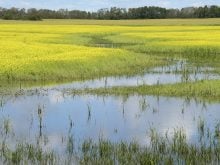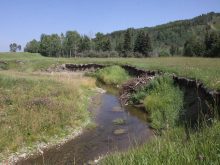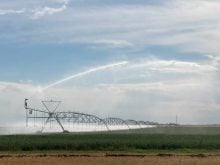REGINA — Saskatchewan’s provincial auditor said the Water Security Agency is making progress toward implementing recommendations made in 2018 about how it regulates agricultural drainage.
However, it still hasn’t finalized its water quality and wetland retention requirements, which Tara Clemett said should be in place before drainage is approved.
The auditor said there are risks associated with allowing drainage without considering the impacts.
Read Also

New program aims to support plant-based exports to Asia
Understanding the preferences of consumers in Taiwan and how they differ from Indonesia or Malaysia isn’t easy for a small company in Saskatchewan.
Her report said the agency is drafting a stewardship policy and as of March began piloting some aspects of that policy with individual landowners. Those projects are to be complete by August and the policy could be finalized after results are analyzed.
The auditor’s office examined nine drainage-approval files and found that staff used a risk framework worksheet to assess flooding, habitat loss and land erosion risks, but not water quality or wetland retention.
“The agency must consider all aspects of risk from both a local and an entire watershed perspective, and document those considerations before approving proposed drainage works,” the report said.
Since the office first audited WSA and made recommendations, it has done two follow-ups.
The 2024 report said the agency has implemented four recommendations and partly implemented five others. Clemett said five years is typically the benchmark her office expects.
Since December 2020, the WSA has finalized policies related to drainage regulation on agricultural land, published expected timeframes to resolve requests for assistance or public complaints, and followed established processes to escalate action on unapproved works.
It also reports twice a year to senior management on action to address non-compliance.
Clemett said she hoped the rest of the recommendations would be implemented by the next follow-up in two or three years.
Aside from finalizing policies on water quality and wetland retention to assess drainage works risks, these include consistently following established processes to document risk assessments and documenting all watershed risks before approving an application.
The WSA also must develop a prioritization plan to identify and bring unapproved high-risk works into compliance and improve public reporting.
Clemett said public reporting should include the number of requests for assistance and the number of unapproved works. Last December the agency introduced a fee to try to curb the number of complaints without basis.
When the WSA introduced its agricultural water management strategy in 2015, it estimated 1.6 to 2.4 million acres had unapproved works. In April 2024, the agency was still trying to estimate the amount using its wetland inventory, Clemett said.
“Saskatchewan continues to have a number of unapproved drainage works and particularly works that do not include appropriate mitigation measures to address flooding, water quality and wildlife habitat concerns,” said the report.
“Not taking timely effective enforcement action against unapproved drainage works increases the risk of further environmental damage, including to neighbouring farmland and wetland retention.”
NDP opposition critic Erika Ritchie said the WSA is taking too long to meet requirements.
“It’s been over five years since the original auditor’s findings. She said herself today that that is sort of a benchmark for closing out audit findings and yet the government has failed at coming forward with the plan to ensure that we have policies in place for how we are retaining wetlands and ensuring that drainage approvals are being managed appropriately,” she said during a news conference.
A new coalition called Wetlands For Tomorrow officially launched the same day as the auditor presented her report.
The coalition promotes wetland conservation and said the government’s stewardship policy will result in drainage of two million acres of wetlands, “which will inundate our lakes and rivers with excess nutrients, increase toxic algal blooms, increase droughts and floods, destroy critical wildlife habitat, damage infrastructure and cost taxpayers billions of dollars.”
It said without mitigation requirements, the losses will be enormous and will include health risks, habitat loss, reduced biodiversity, fewer pollinators and reduced water quality and supply.
It added that wetlands belong to Saskatchewan people and, as a Crown resource, should be managed for everyone’s benefit.


















